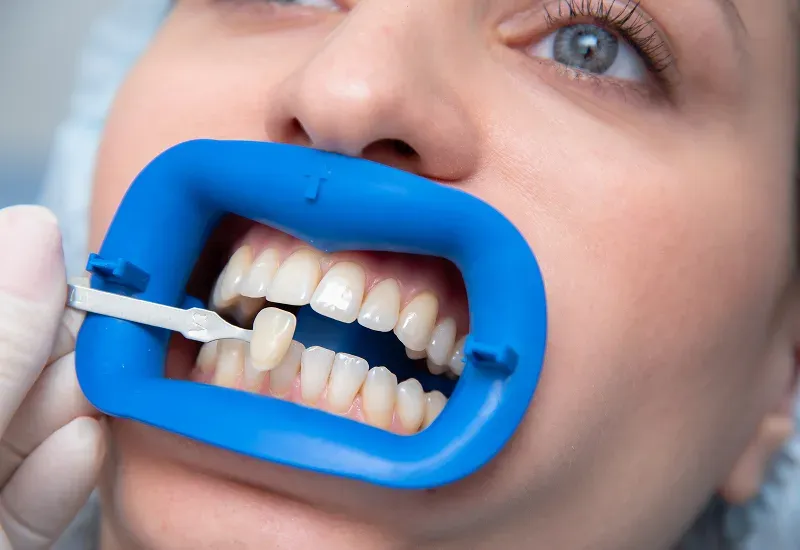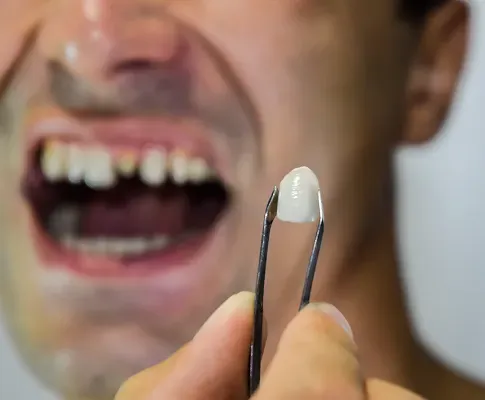
Dental Crowns and Caps: What’s the Difference and Which Do You Need?
Dr. Azadeh Hosseini
23 June 2025
You’ve got a damaged tooth, and your dentist mentions a “crown.” Then someone else calls it a “cap.” Now you’re wondering if there is a difference? Is one better than the other? Or are they the same thing with different names? If you’ve ever felt unsure about dental terms, you’re not alone. This blog breaks it down in a way that’s easy to understand, so you can make smart, informed decisions about your dental care.
We’ll explain what crowns and caps are, how they work, when you might need one, what the treatment involves, and how to know which is right for your situation. If you’re dealing with a cracked, worn, or heavily filled tooth, or just doing your homework before your appointment—this is the guide for you.

What Are Dental Crowns?
A dental crown is a tooth-shaped cover that fits over an existing tooth. Dentists use crowns to restore teeth that are badly damaged, decayed, cracked, or weakened. Crowns bring strength, shape, and function back to the tooth while protecting it from further harm.
Crowns can be made from several materials, including:
- Porcelain or ceramic: Natural-looking and often used for front teeth.
- Metal alloys: Strong and long-lasting, great for molars.
- Porcelain fused to metal: Offers a balance between strength and appearance.
- Zirconia: Durable and esthetically pleasing.
- Gold: Rarely used now but still available for those who prefer it.
Crowns are used when a tooth cannot be fixed with a simple filling. They cover the entire visible portion of the tooth, right down to the gum line.
What Are Dental Caps?
Here’s the truth: a dental cap is the exact same thing as a dental crown. There is no clinical difference between the two. “Cap” is just the older, more casual term. Some people still use it, especially when talking about work done in the past or explaining dental work to kids.
So why the confusion? It’s mostly about language. Dentists tend to use the word crown because it sounds more professional and precise. Patients, especially those who have had dental work done many years ago, might say cap because that’s what it used to be called more often. But if your dentist says you need a crown and your friend says they had a cap, they’re talking about the same thing.
When Do You Need a Dental Crown (or Cap)?
Crowns are often recommended when a tooth is too weak or damaged for a filling, inlay, or bonding to provide lasting support. Fillings work well for minor to moderate damage, but they rely on the surrounding tooth structure for stability. When that structure is no longer strong enough, or if the damage is too deep, a crown becomes the more reliable option. Here are the most common reasons a dentist may recommend a crown:
1. Large Cavities
When decay eats away a large portion of a tooth, a filling may not be enough to restore its strength. A crown can completely cover and protect what remains of the tooth, sealing it from bacteria and reinforcing it for biting and chewing.
Without a crown, the tooth might continue to fracture or decay under pressure. Crowns are often the next step when repeated fillings have weakened a tooth over time or when decay extends into multiple surfaces.
2. Cracked or Broken Teeth
Teeth can crack from injury, biting something hard, or even clenching during stress. These cracks can spread, creating pain or sensitivity.
A crown acts like a protective shell, holding the tooth together and absorbing the pressure from daily use. In cases where a portion of the tooth has already broken off, a crown restores the tooth’s shape and functionality. It can prevent the crack from worsening and reduce the risk of needing an extraction later on.
3. After a Root Canal
Root canal therapy removes infected or inflamed pulp from inside the tooth. While this saves the tooth from extraction, the procedure can leave it brittle and more likely to crack. Once the nerve and blood supply are removed, the tooth no longer has the internal support it once had.
A crown is placed after a root canal to protect and seal the tooth from fracture or reinfection. Without it, the tooth is much more vulnerable to breaking under everyday stress.
4. Worn Teeth from Grinding
Chronic teeth grinding (bruxism) wears teeth down over time. It can flatten biting surfaces, create chips, and cause microfractures. Worn teeth often become sensitive and lose their proper alignment. Crowns can rebuild the natural height and shape of the tooth, helping restore a balanced bite and relieving strain on the jaw.
For some patients, full-mouth rehabilitation using multiple crowns may be needed to correct years of grinding damage.
5. Cosmetic Reasons
Sometimes a tooth is structurally sound but looks out of place due to its shape, color, or size. Crowns can be used to improve the appearance of teeth that are:
- Severely discolored or stained and do not respond to whitening
- Misshapen or irregularly sized
- Slightly rotated or crooked (when orthodontics isn’t needed or preferred)
Unlike veneers, which only cover the front of the tooth, crowns cover the entire visible portion, offering both cosmetic and structural improvement.
The Crown Procedure
Getting a crown usually takes two visits—though same-day crowns are available at some offices.
Visit 1: Preparation
The dentist will:
- Numb the tooth
- File it down to make room for the crown
- Take an impression of your tooth
- Place a temporary crown
You’ll wear the temporary for about 1–2 weeks while the lab makes your custom crown.
Visit 2: Placement
At the second visit, the dentist will:
- Remove the temporary
- Check the fit and color of the permanent crown
- Cement it in place
That’s it, you walk out with a restored tooth that looks and works like new.
Types of Dental Crowns
Not all crowns are created equal. The type of crown your dentist recommends depends on the location of the tooth, how much bite force it handles, your esthetic goals, and your budget.
Porcelain or Ceramic Crowns
- Best for front teeth
- Match natural tooth color
- Can be brittle under pressure
Porcelain-Fused-to-Metal (PFM)
- Stronger than full porcelain
- Good for back teeth or bridges
- May show a dark line near the gums
Zirconia Crowns
- Durable and natural-looking
- High strength for chewing areas
- Often used for both front and back teeth
Metal Crowns (Gold or Alloys)
- Extremely durable
- Not tooth-colored
- Best for molars that are out of sight

Need any help?
Contact UsWhen Is a Crown the Better Option?
A filling is used when the damage is small and the tooth structure is still strong. But when more than half the tooth is gone or weak, a filling may not last. That’s where a crown comes in. It covers the entire tooth, providing a solid, protective shell. This makes it less likely to crack or break in the future.
Think of it this way:
- Filling = patch job
- Crown = full rebuild
If you’ve had the same tooth filled multiple times, it may be time to consider a crown.
Final Words
Now you know that “crown” and “cap” mean the same thing. What matters most is not the name—it’s the purpose: to protect your tooth, restore its function, and make your smile whole again.
If your dentist recommends a crown, it’s because your tooth needs more support than a filling can provide. Crowns are strong, durable, and designed to last for years with proper care. Whether it’s for damage, decay, or just a cosmetic boost, a crown can help keep your natural tooth where it belongs—in your mouth.
Contact your Concord dentist, Dr. Azadeh Hosseini, DDS, at Top Concord Dental to learn more about Dental Crowns and Caps, and What’s the Difference, and Which Do You Need?
Resource:
Top 5 Cosmetic Dentistry Treatments That Instantly Boost Confidence
Disclaimer
*This media/content or any other on this website does not prescribe, recommend, or prevent any treatment or procedure. Therefore, we highly recommend that you get the advice of a qualified dentist or other medical practitioners regarding your specific dental condition. *
